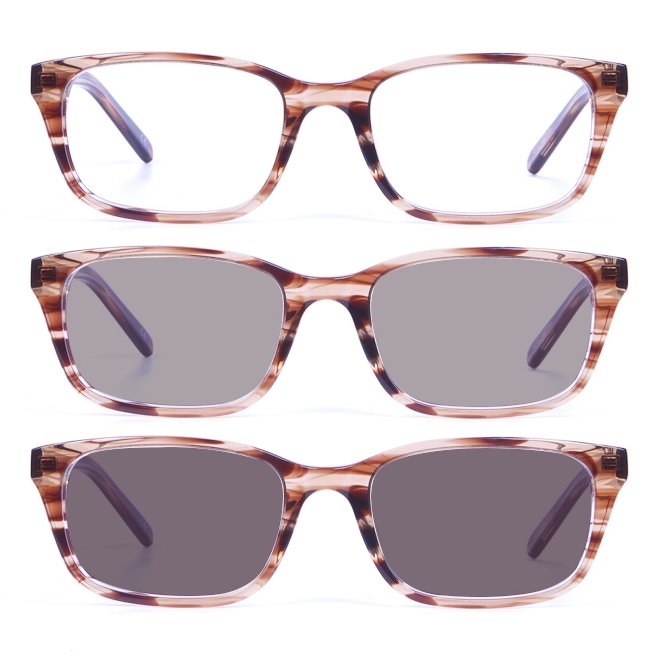There are few industries in the world that have evolved as much as the eyewear industry. From different materials which go into making the frames and lenses to the latest fashion choices – like clear glasses – eyewear has come a long way. One such advancement in technology and the recent trend is transition lenses. But what exactly are they, and how do they work?
Glasses indoors, sunglasses outdoors
Transitions® Lenses is the brand name of a type of photo-chromatic lenses which develop a tint when exposed to light. It is the leading brand for photo-chromatic frames in the world and has become synonymous with technology.
These highly digital lenses can be used as both glasses and sunglasses. While eliminating the need to carry two pairs of frames, they also protect our eyes from harmful UV rays.
How do they pull this off?
Light adaptive lenses do not use any coating to achieve this feat, the inherent nature of the lens itself is such that it changes colour when exposed to UV rays. The molecules which form the lens change their structure to give it a darker tint. There is a range of options of tints to choose from, like grey, green and brown. When the exposure to UV rays decreases, the lenses revert to their normal state. It usually takes just a few seconds for the lens to darken or clear up.
Advantages of light-adjusting lenses
- Cost-effective – While Transition lenses cost more than normal prescription ones, they eliminate the need to carry two pairs of frames. So in the long run, you can save money if you need both cheap glasses and sunglasses.
- UV protection – Photochromatic lenses block the harmful UV light from reaching your eyes; you don’t need any special coating for that. UV rays have been linked with conditions like cataract and photokeratitis according to experts.
- Digital blue light protection – Like UV rays, blue light is a specific wavelength or a part of natural light. Apart from the sun, it is also emitted by digital screens like TV, computers, laptops, phones, etc. While it is good for us in normal quantities, overexposure to it can disrupt our sleeping rhythm and cause eye strains, fatigue, etc. The close proximity to these screens and the highly active digital lifestyle increase the risk. Transition lenses also block this blue light for a comfortable visual experience.
- Style factor – The wide range of tint options ensure your style game is on point as well! Choose a tint according to your frame colour, lifestyle, personality, etc. Different shades also affect your colour perception, like increasing contrast, etc. Make sure to keep that in mind as well.
Transition lenses help improve visual clarity overall.
Apart from these, there might be some cons as well, depending on which brand you go for. Some of the low-quality ones are not as quick in adapting to the light conditions. They are also not polarized, which means they will not be able to block harsh, horizontal glare from sources like snow or water.
Frequently Asked Questions about
- Do Transition lenses work inside cars?
Since a lot of car windshields already have an anti-UV mechanism, most light-adjusting lenses do not develop a tint inside cars. But some of the newer versions of transition lenses work inside cars as well.
- Can I wear Transition lenses with a prescription?
Yes! That is why they work as both glasses and sunglasses. You can buy both non-prescription and prescription glasses online with Transition lenses.
- How do I clean transition lenses?
You can maintain your transitions just like any other lenses. Simply rinse them and dry them with a microfibre cloth from time to time. Keep them in case when not using them.
- Do they work in cloudy weather?
Yes, UV rays are present in cloudy and overcast conditions as well. That is why transition lenses will still work in such conditions.





